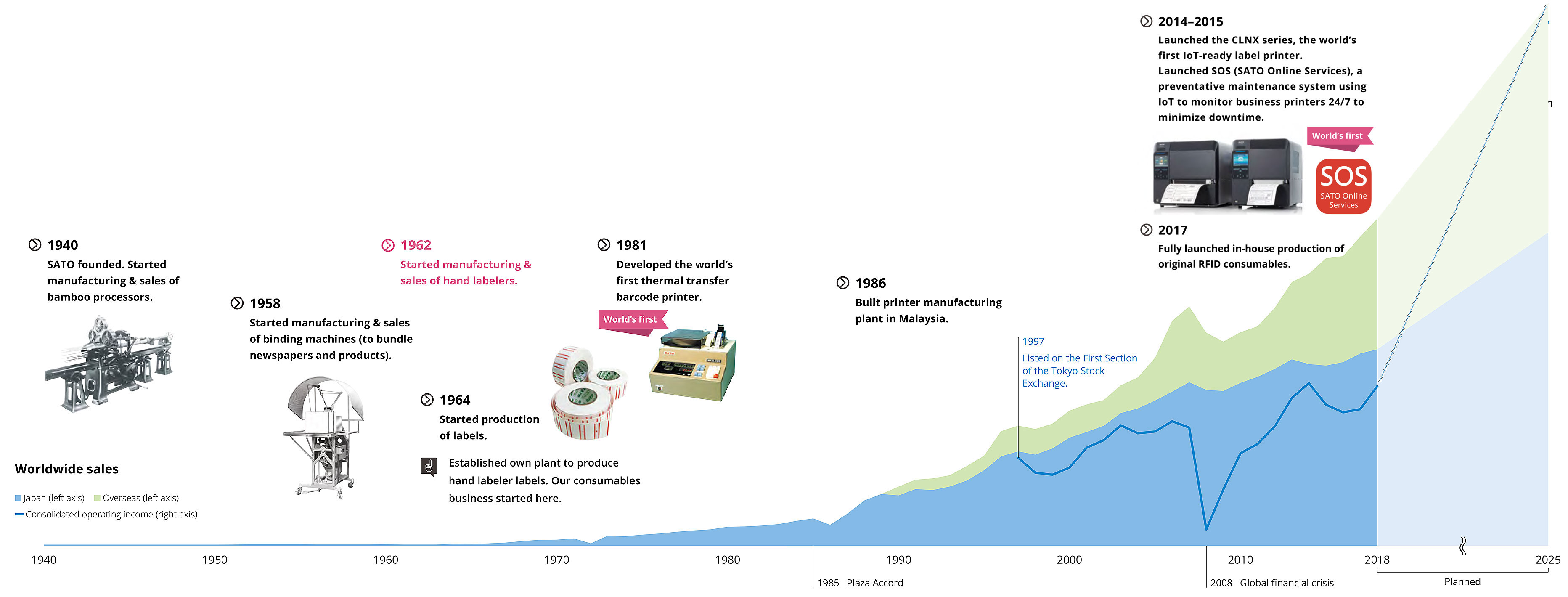SATO was founded in 1940 to develop, manufacture and sell machinery for processing bamboo, rattan and palm. Throughout its history, the company has been obsessed with meeting demands for labour efficiency. In 1962, SATO founder Yo Sato invented a hand labeller. The company subsequently became a pioneer in price marking, and was able to open up new markets when the hand labeller became a smash hit around the world. In 1964, SATO began independently manufacturing hand labellers, moving beyond the machine manufacturer paradigm to build the foundations of a supply business. With the emergence of point-of-sale (POS) systems in the 1970s, SATO developed new hand labeller models that were compatible with optical character recognition (OCR) and barcodes. In 1981, the Company emerged as the leading manufacturer of in-store marking solutions when it invented the world's first thermal transfer printer for JAN/UPC/EAN POS systems.
Since then, applications for barcodes have spread dramatically for the management of goods across a number of industries, including retail, manufacturing, logistics, food processing and medical care. Meanwhile, the use of 2D codes, which enable users to input information into a small space, has also been increasing and has come to stay as a means for consumers to obtain information using mobile phones. In recent years, RFID, which communicates and reads information using radio waves, has been attracting attention and achieving rapid progress as an advanced authentication method. SATO leveraged the auto-identification expertise it has developed over many years in barcodes and 2D codes to develop and market the first-ever RFID printer in Japan in 2003. SATO today operates globally in cooperation with leading Japanese and international companies, contributing to the development of auto-identification systems around the world.
Slide right to see full image as required












